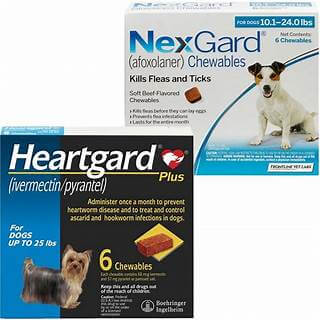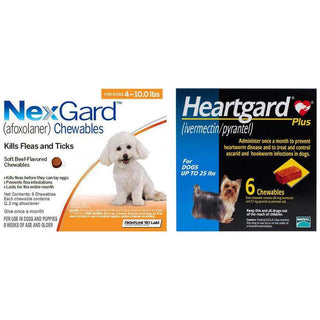
Are Bones Safe And Healthy For Dogs?
Feeding bones to dogs offers various nutritional, health, and behavioral advantages.
The Nutritional Advantages Of Bones For Dogs
Bones are natural sources of minerals, vitamins, and essential amino and fatty acids, such as:
- Protein: Provides amino acids crucial for healthy skin and fur, muscle development, and tissue repair.
- Calcium Phosphate: Essential for bone growth and helps the skeletal system regenerate and adapt.
- Magnesium: Supports muscle function, especially in maintaining a healthy heart.
- Phosphorus: Vital for bone structure, cell structure, and energy production.
- Marrow: Rich in collagen, iron, and vitamin B. Collagen promotes healthy joints, skin, coat, and digestion, while iron and vitamin B provide the energy dogs need for a long, happy, and healthy life.
- Vitamin D and Glucosamine help support a healthy digestive system and prevent common issues like leaky gut and poor gut function.
Health Benefits Of Feeding Bones To Dogs
Healthy Gums and Teeth: Many dogs dislike brushing their teeth, but chewing on raw meaty bones helps clean their teeth by removing gristle and cartilage, acting like a natural floss.
Digestive Health: Raw bones cleanse the digestive tract, promoting healthy bowel movements and supporting the health of anal glands.
Jaw Exercise: Chewing and gnawing on raw bones provide excellent natural exercise for your dog's jaw.
Behavioral Advantages Of Feeding Bones To Dogs
Mental Well-being: Chewing is a natural behavior for dogs, and engaging in this activity is crucial for their mental health.
Calming Effect: Regular chewing releases endorphins, which elevate the sense of pleasure, helping your dog feel happy and reducing anxiety.
Are Bones Digestible For Dogs?
Dogs on a raw diet can digest small pieces of bone more easily than those fed kibble, thanks to their lower pH stomach acid, better suited for bone digestion.
However, most dogs have difficulty digesting large pieces of bone. These can pass into the intestine and cause constipation or lead to a buildup known as impaction.
Are Cooked Bones Safe To Eat For Dogs?
Never give dogs cooked bones. Cooking alters the bone's consistency, making it prone to shattering or splintering, which can harm your dog's mouth, throat, and intestines. Additionally, cooking depletes the bone's nutritional value and makes it harder to digest, increasing the risk of blockages.
Are Raw Bones Safe To Eat For Dogs?
Always give dogs raw bones with meat attached for chewing. To minimize the small risk of salmonella, freeze the bones for a couple of days. This precaution helps eliminate any parasites and inhibits bacterial growth. Farmed meat from reputable sources is generally low risk for parasites, but freezing is a simple extra step to ensure safety.
Safely Feeding Bones To Your Dog: A Guide
To ensure your dog safely enjoys bones, follow these guidelines:
- Supervise your dog while they eat bones.
- Provide raw, fresh bones with flesh attached. Avoid cooked bones, as they are brittle and can shatter easily.
- Choose the appropriate type of bone for your dog.
Is It Safe To Leave A Dog Alone With Bones?
Never leave your dog alone with a bone, regardless of how often they've eaten bones before. They might swallow the bone, or a piece could break off and get stuck.
If the bone starts to break apart or becomes too small, be ready to take it away and offer a high-value treat to prevent resource guarding. Your dog may walk away from the bone when they're done. If the bone is still in good condition, wrap it in a food bag and store it in the fridge. Your dog can enjoy it again in a few days.
At What Age Can Dogs Eat Bones? Is It Safe For Puppies?
Once puppies start developing teeth, you can give them bones appropriate for their size. Soft, chewable bones like chicken wings and chicken or duck necks are recommended. Initially, they may mouth the bones but still benefit from them. This also helps develop their eye-mouth coordination and chewing skills.
You can introduce more rigid bones when the puppy reaches around six months and develops adult teeth. However, avoid hard bones, such as cow leg bones, as they can damage teeth and gums.
Which Bones Are Safe For Dogs?
The type of bone you should give your dog depends on their size:
- Small dogs and puppies: Chicken necks, duck feet, chicken wings.
- Medium dogs: Duck necks, chicken thighs, turkey wings, chicken carcass.
- Large dogs: Lamb ribs, lamb neck pieces, venison ribs.
- Extra large dogs: Venison neck, turkey neck, chicken/duck carcass, lamb ribs.
Which Bones Are Dangerous For Dogs?
Some bones are unsuitable for dogs, including:
- Weight-bearing bones: Cow and pig leg bones are tough because they support the animal's weight. These bones can break a dog's teeth.
- Bone marrow rings: These large, hollow bones often found in pet shops have nutritious marrow, but the rings can get stuck in small dogs' teeth, and larger dogs can damage their teeth trying to bite them.
- Sharp-edged bones: Bones from butchers or supermarkets may have been cut with a sharp blade, leaving dangerous edges that can cut your dog's mouth.
Risks Of Feeding Bones To Your Dog
Cooked bones and small raw bones can pose choking hazards for dogs. Always provide bones that are appropriate for your dog's size. Extra hard bones can break teeth and damage your dog's mouth, so the bone's structure is also important.
Some dogs may experience dry, crumbly stools or develop constipation a day or two after eating a bone due to the high calcium content. If your dog is constipated, add extra insoluble fiber to their diet with steamed leafy vegetables or pureed pumpkin or squash to soften their stool. If your dog typically becomes constipated after eating bones, consider replacing some of their usual food with plain mince on those days.
Some dogs may vomit bile containing bone fragments if they consume more bone than they can comfortably digest. If this happens, try feeding smaller bones or limiting their time with the bone by swapping it for a high-value treat when they've had enough.
For dogs with food sensitivities, ensure that the ground bone in their meal comes from the same animal as the meat to avoid digestive issues.
What To Do If Your Dog Is Choking On A Bone
Dogs choke when something gets stuck in their throat and block their airway. If the airway is partially blocked, your dog may:
- Retch
- Pace
- Paw at their mouth
- Have blue gums or tongue
If the airway is entirely blocked, your dog will struggle to make noise.
To help a choking dog:
- Open the Mouth: If possible, open your dog's mouth and gently sweep the back of the throat with your fingers to remove the obstruction. Only attempt this if your dog is calm enough to avoid biting you.
-
Perform the Heimlich Maneuver:
- For an object lodged far back in the throat, if the dog is lying on its back, perform a quick, strong thrust over the widest part of the chest to dislodge the object. Then, check the back of the throat and remove the object if it's visible.
- For larger dogs, stand behind them and lift their front legs off the ground to be on their back legs. Make a fist with one hand and place your other hand on top. Push forward and firmly up, just behind the rib cage.
- Seek Veterinary Help: If the object doesn't come loose, contact your vet immediately and get your dog to them as quickly as possible.
Can You Include Bones In Your Dog's Raw Diet?
Our raw food composition consists of 80% human-grade meat, offal, and bone and 20% superfoods and seasonal fruits and vegetables. This balance ensures your dog receives all the nutrients it needs for a happy, healthy, and active life, so there's no need to add extra bone to its diet.
However, you can offer bones as a treat or for your dog to chew on when they're feeling anxious.
How Often And How Much Bone Should You Give Your Dog?
It is recommended that bones make up 10% of your dog's raw food diet. Providing whole bones with meat attached could constitute about 30% of their diet, as the meat and bone are consumed together.






